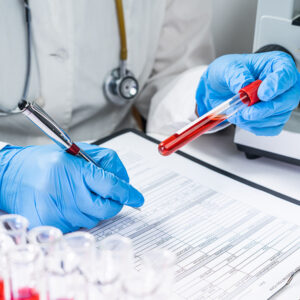Much has been debated about the victories and failures of America’s battle with COVID-19. However, all agree the pandemic taught our healthcare system a lot about fighting a highly contagious, deadly virus, and that should make us better prepared for the next threat. But as a medical provider working in HIV prevention, I say let’s not wait to put those lessons to work—we need to apply the urgency and innovation we put to fighting the inferno of the COVID-19 pandemic to squelching out the smoldering embers of the still deadly HIV/AIDS epidemic.
The HIV/AIDS community has racked up life-saving victories, with medications that make HIV a survivable chronic condition and, when taken properly, render the infection untransmittable. When PrEP is taken as prescribed by HIV-negative people, this confers nearly perfect protection. Nonetheless, there are new infections every day in the U.S. and around the world. Through my role as a telehealth provider, I have to inform a newly infected HIV patient of their status at least twice a week, which is never an easy call to make. In the U.S., there are approximately 1.2 million people living with HIV and 14 percent of them do not know they have it—because testing, prevention, and treatment are not reaching them.
During COVID-19 our healthcare system rapidly re-organized to create drive-through testing, a warp-speed vaccine effort, and public education that had everyone talking about antibodies, antigens, and viral load. We can certainly exert the much less disruptive effort required to end HIV, using these lessons of the pandemic.
With COVID-19 we saw that frequent testing, especially of those in high-risk populations, was essential to containment. Medical providers should assume that patients need HIV testing unless they know otherwise. Going forward, we should think more like the University of Chicago Medical Center, which set up a combination HIV/COVID-19 testing site for the public during the pandemic.
Healthcare providers didn’t judge or shame people for COVID-19 infection, whether they caught it working an essential job or attending a risky social gathering. Similarly, we should destigmatize HIV and the ways people contract it. Doctors can be uncomfortable talking about sex, and there may be “no time” to have the crucial conversations about a patient’s sex life—but all people should be asked about sex so they can get tested for HIV at the frequency that’s right for them and be prescribed PrEP if they’re at risk of HIV.
We brought COVID-19 tests and vaccines to stadiums, schools, supermarkets. Let’s make HIV prevention that convenient. Patients in need of HIV prevention have to jump through hoops, the first being finding a provider they can trust. Imagine living in a small town where everyone knows you, or where the lab technician or pharmacist is also a member of your church. Shame and stigma might prevent you from seeking care face-to-face.
Telehealth provides a solution to the challenge of bringing non-judgmental HIV prevention to the people. Accessing medical care through a computer or smartphone allows a patient to request an HIV test or PrEP as soon as they feel empowered to do so without looking for a clinic, taking time off of work, or canceling the appointment out of fear. At-home HIV tests and PrEP can then be sent to the patient’s door and communications with providers can happen from the convenience of home.
But to fulfill the HIV prevention potential of telehealth, we need policy changes. One is to revise laws that prohibit telehealth providers from providing care across state lines so that the best HIV care (often in cities) can reach those who need it most (those in poor, rural areas).
Another way to make this life-saving and cost-saving care more accessible is to improve telehealth reimbursements. State laws that require care to begin in the clinic before subsequent telehealth visits will be reimbursed create a big barrier to access for many who are most at risk.
The city of San Francisco experienced especially low rates of COVID-19 as compared to other dense cities, which has been attributed to a public health infrastructure that learned hard lessons from the AIDS epidemic and was prepared to sound the alarm early, test and contract trace when a new virus emerged. Now let’s flip that and take what the health system as a whole has learned from COVID-19 and apply it to speed the end of HIV in all communities around the country.

